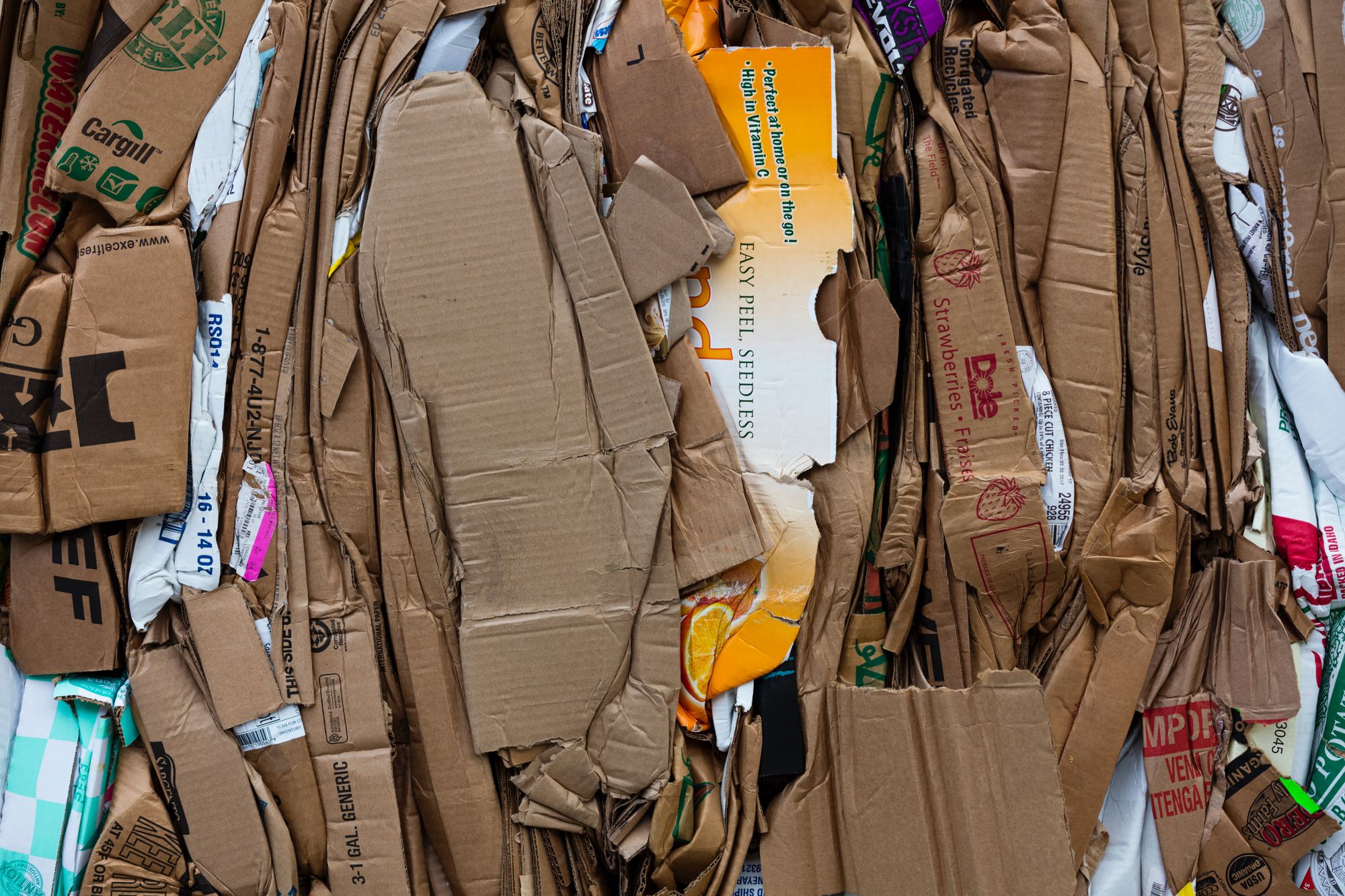The water consumption in the paper industry ranges from 6 to 17 liters of water per kilogram of paper produced, with the highest consumption being in the pulp and paperboard sectors. (Source: Water Footprint Network, 2021)
Deforestation for paper production contributes to around 10% of global greenhouse gas emissions, and the paper and pulp industry is one of the largest consumers of fossil fuels worldwide. (Source: Rainforest Action Network, 2021)

Paper manufacturing is a major industry worldwide, providing us with the paper products we use on a daily basis. While the paper has many benefits, such as being a renewable resource, biodegradable, and versatile, it also has its drawbacks.
The manufacturing process of paper can lead to deforestation, water pollution, and chemical use, as well as generate large amounts of waste.
In this context, it is important to understand the pros and cons of paper manufacturing to make informed decisions about the use and production of paper and to explore ways to reduce its negative impacts on the environment.
This article will help you understand all of this by covering the following topics:
- What is Paper Manufacturing?
- What are the Pros of Paper Manufacturing?
- What are the Cons of Paper Manufacturing?
- What are the Challenges Associated with Paper Manufacturing?
- How to Address the Challenges Associated with Paper Waste?
- How can Deskera Help You with Paper Manufacturing?
- Key Takeaways
- Related Articles
What is Paper Manufacturing?
Paper manufacturing is the process of producing paper from raw materials such as wood pulp, recycled paper, or other plant fibers. The process typically involves several steps, including pulping, bleaching, and drying, which are performed in large machines in a paper mill.
In the pulping process, the raw materials are broken down into small fibers and then mixed with water to create a pulp. The pulp is then cleaned and bleached to remove impurities and create a uniform color.
After the pulping and bleaching process, the pulp is pressed and dried to remove excess water and form the paper sheet. The paper may then be coated or finished for specific applications.
There are various types of paper manufacturing processes, including mechanical pulp, chemical pulp, and recycled paper. Each process has its own advantages and disadvantages in terms of cost, energy use, environmental impact, and product quality.
What are the Pros of Paper Manufacturing?
Paper manufacturing can be a sustainable and environmentally friendly industry if managed responsibly, and it provides many benefits to society. The pros of paper manufacturing are:
Renewable Resource
Paper is made from trees, which are a renewable resource. Trees can be replanted and grown again after they are harvested, which means that paper production can be sustained without depleting natural resources.
Additionally, well-managed forests can provide a variety of environmental benefits, including habitat for wildlife, carbon sequestration, and soil conservation.
By using wood fiber from responsibly managed forests, paper manufacturers can help support sustainable forest management practices and ensure that the resource remains renewable over the long term.
These practices will also lead to improved customer retention and customer loyalty, while also assisting in having positive brand awareness.
Biodegradable
Biodegradability is another pro of paper manufacturing. Paper products are biodegradable, which means that they can break down naturally over time without leaving harmful residues behind. This is in contrast to many synthetic materials that can take hundreds of years to decompose and can release toxic chemicals into the environment as they degrade.
Because paper is made from natural fibers, it can be composted and turned into soil, providing a valuable resource for gardening and farming.
The biodegradability of paper products makes them a more environmentally friendly option for many applications, such as food packaging and disposable items, where the products are intended to be discarded after use. Thus, biodegradability of paper products support sustainability.
Job Creation
Job creation is another pro of paper manufacturing. The paper manufacturing industry employs many people in various stages of the production process, from forestry and harvesting to transportation, processing, and manufacturing.
In addition, the industry supports jobs in related industries, such as pulp and paper machinery manufacturing, chemicals and additives production, and logistics and distribution.
The jobs created by the paper manufacturing industry can provide opportunities for people in both rural and urban areas and can help support local economies.
Furthermore, the industry's emphasis on sustainable forest management practices can lead to the creation of jobs in conservation and environmental management.
Recyclable
Paper products can be recycled multiple times, which means that the same material can be reused instead of being sent to landfills or incinerated. Recycling paper helps to conserve natural resources, reduce energy consumption, and reduce the amount of waste that ends up in landfills.
In addition, recycling paper can help to reduce greenhouse gas emissions by avoiding the need to extract new raw materials and process them into new products.
The recyclability of paper products makes them a more environmentally friendly option for many applications, such as office paper, cardboard boxes, and packaging materials.
Versatile
Versatility is another pro of paper manufacturing. Paper is a highly versatile material that can be used for a wide range of applications. It can be used for printing, writing, packaging, and many other uses. Paper can be made into different grades and types to suit different applications, from lightweight tissue paper to heavy-duty cardboard.
It can be coated with various substances to provide different properties, such as water resistance, strength, and smoothness. Paper can also be combined with other materials, such as plastics and metals, to create composite materials with unique properties. The versatility of paper makes it a highly valuable and useful material for many industries and applications, opening up lot of revenue streams in the process.
Affordable
Compared to many other materials, paper is a relatively low-cost material to produce. This is because the wood pulp, the main raw material used in paper manufacturing, is widely available and can be obtained from sustainably managed forests.
Additionally, paper production technology has become more efficient over time, which has helped to lower production costs. As a result, paper products are often more affordable than other materials, such as plastics or metals, which can be more expensive to produce.
This affordability makes paper products accessible to a wide range of buyer personas, consumers and industries.
Carbon Storage
Trees used in paper manufacturing store carbon dioxide from the atmosphere as they grow. This means that forests used for paper production can act as carbon sinks, helping to mitigate the effects of climate change by removing carbon dioxide from the atmosphere.
Additionally, well-managed forests used for paper production can be a sustainable source of carbon storage over the long term. When trees are harvested, new trees can be planted, and the carbon stored in the harvested trees can be sequestered in the products made from them, such as paper products.
By supporting responsible forest management practices, the paper manufacturing industry can contribute to global efforts to reduce greenhouse gas emissions and combat climate change.
Source of Energy
The paper manufacturing process generates a significant amount of biomass by-products, such as bark, wood chips, and sawdust. These by-products can be burned to generate energy, providing a renewable source of energy for the paper manufacturing process and beyond.
Additionally, some paper mills use alternative energy sources, such as hydroelectric power or wind power, to generate electricity. By using renewable sources of energy, the paper manufacturing industry can reduce its reliance on fossil fuels and help to mitigate the effects of climate change.
The use of biomass by-products as a source of energy also helps to reduce waste and can provide an additional revenue stream for paper mills, thereby improving their cash flow.
Innovation
The paper manufacturing industry has a long history of continuous innovation, with ongoing efforts to develop new products, processes, and technologies. These innovations can lead to more efficient production processes, lower costs, and the development of new products with unique properties and applications.
For example, recent innovations in paper-based electronics have led to the development of flexible electronic devices, such as sensors and displays, that can be printed onto paper or paper-like materials.
Innovations in packaging have also led to the development of new paper-based materials, such as molded fiber and paper-based coatings, that can be used as an alternative to plastic packaging.
By continuing to invest in research and development, the paper manufacturing industry can drive innovation and help to address environmental challenges while creating new economic opportunities.
What are the Cons of Paper Manufacturing?
Here are some potential cons of paper manufacturing:
Deforestation
Deforestation is one of the main cons of paper manufacturing. To produce paper, trees must be harvested, and large-scale deforestation can have significant environmental impacts. Deforestation can lead to habitat loss for wildlife, loss of biodiversity, soil erosion, and increased greenhouse gas emissions.
Additionally, clear-cutting of forests can have negative impacts on local communities that rely on forests for their livelihoods, food, and cultural practices.
While some paper manufacturers use sustainably managed forests or recycled materials to reduce their environmental impact, there is still a risk of deforestation associated with paper production.
Water Use
The process of manufacturing paper requires a significant amount of water, including water used for pulping, bleaching, washing, and cooling. This water use can put pressure on freshwater resources, particularly in areas where water is scarce or competing demands for water exist.
Additionally, the discharge of wastewater from paper mills can contain pollutants that can harm aquatic ecosystems and impact the quality of downstream water resources.
While many paper mills have implemented measures to reduce water use and improve water quality, water use, and wastewater management remain significant challenges for the paper manufacturing industry.
Chemical Use
The use of chemicals in paper manufacturing is another con of the industry. Chemicals are used throughout the paper manufacturing process, including in pulping, bleaching, and sizing.
Some of these chemicals can have negative environmental impacts, including air and water pollution, soil contamination, and impacts on human health.
For example, some of the chemicals used in the bleaching process, such as chlorine and chlorine dioxide, can generate harmful byproducts like dioxins and furans, which can persist in the environment and have serious health impacts.
While the industry has taken steps to reduce chemical use and develop safer alternatives, chemical use remains a significant environmental and health concern associated with paper manufacturing.
Energy Use
The process of manufacturing paper can be energy-intensive, requiring large amounts of electricity and heat. The energy used in the manufacturing process can come from a variety of sources, including fossil fuels, biomass, and renewable energy sources such as hydroelectric power.
However, the use of fossil fuels, in particular, can contribute to greenhouse gas emissions and climate change.
Additionally, high energy use can result in higher production costs for paper manufacturers, which can affect the price and competitiveness of paper products in the market.
Efforts to improve energy efficiency and increase the use of renewable energy sources can help to reduce the environmental impacts associated with energy use in paper manufacturing.
Waste Generation
The manufacturing process generates a significant amount of waste, including pulp sludge, bark, and other by-products. Disposing of this waste can be challenging, and improper disposal can have environmental impacts, including soil and water pollution.
Additionally, paper products themselves can become waste at the end of their useful life, leading to challenges in managing paper waste in landfills and the potential for littering.
Efforts to reduce the waste generation in the manufacturing process and to improve recycling and waste management can help to mitigate the environmental impacts associated with waste generation in paper manufacturing.
Recycling Challenges
Recycling challenges are another con of paper manufacturing. While the paper is a recyclable material, there are challenges associated with recycling that can limit the effectiveness of recycling efforts. These challenges include:
- Contamination: Paper products can become contaminated with other materials, such as food waste, which can make them more difficult to recycle and reduce the quality of the recycled material.
- Collection and sorting: Collecting and sorting paper for recycling can be a challenge, particularly in areas where recycling infrastructure is not well-developed.
- Transportation: Transporting recycled paper to recycling facilities can be energy-intensive and can contribute to greenhouse gas emissions.
- Quality: The quality of the recycled paper can be lower than that of virgin paper, which can limit its suitability for certain applications.
- Cost: Recycling paper can be more expensive than producing virgin paper, particularly in areas where recycling infrastructure is not well-developed or where the cost of labor is high.
Efforts to improve recycling infrastructure, reduce contamination, and develop markets for recycled paper products can help to overcome these challenges and improve the effectiveness of paper recycling efforts.
Land Use
The production of wood pulp for paper manufacturing can have impacts on land use, including deforestation, conversion of natural ecosystems to plantations, and competition with other land uses, such as agriculture or conservation. These impacts can result in loss of biodiversity, soil erosion, and changes to local hydrological cycles.
Additionally, the use of pesticides and fertilizers in plantations can have negative environmental impacts. Efforts to promote sustainable forestry practices, such as reforestation, reduced-impact logging, and certification programs, can help to reduce the negative impacts of land use associated with paper manufacturing.
Health Impacts
The manufacturing process can result in the release of harmful chemicals and pollutants into the environment, which can have negative impacts on human health. These pollutants can include sulfur dioxide, nitrogen oxides, particulate matter, and volatile organic compounds (VOCs). Exposure to these pollutants can lead to respiratory problems, cardiovascular disease, and other health problems.
In addition to the health impacts associated with pollution, workers in the paper manufacturing industry may be exposed to harmful chemicals and physical hazards, such as noise and heat stress. Exposure to these hazards can lead to a range of health problems, including lung disease, hearing loss, and musculoskeletal disorders.
Efforts to reduce pollution from paper manufacturing, such as the use of cleaner production technologies and the implementation of emissions controls, can help to reduce the health impacts associated with the industry. Additionally, efforts to promote worker safety and improve working conditions can help to reduce the health risks faced by workers in the industry.
Market Competition
Market competition is another con of paper manufacturing. The paper manufacturing industry is highly competitive, with many different players in the market. This competition can lead to price pressures, which can make it difficult for some companies to remain profitable.
Additionally, competition can lead to overproduction and excess supply, which can drive down prices further and exacerbate the financial challenges faced by some companies.
Competition can also lead to a focus on cost-cutting measures, which can include reducing labor costs, increasing automation, and outsourcing production to lower-cost countries. These measures can have negative impacts on workers and communities, including job losses and reduced economic opportunities.
Efforts to promote sustainable production practices and to support local communities affected by the paper manufacturing industry can help to mitigate the negative impacts of market competition.
Additionally, efforts to promote innovation and value-added products can help companies to differentiate themselves in the market and compete on factors other than price.
What are the Challenges Associated with Paper Manufacturing?
The challenges associated with paper waste include:
- Volume: Paper waste makes up a significant proportion of the waste generated globally. The sheer volume of paper waste can make it difficult to manage and dispose of properly.
- Recycling: Although paper is a recyclable material, there are challenges associated with the recycling process. Contamination, poor quality of recycled paper, and lack of infrastructure and markets for recycled paper are some of the challenges.
- Landfilling: Paper waste that is not recycled often ends up in landfills. This can lead to the generation of methane, a potent greenhouse gas that contributes to climate change. Additionally, landfills can have negative impacts on nearby communities and ecosystems.
- Environmental impacts: The production of paper from virgin wood pulp can have significant environmental impacts, including deforestation, loss of biodiversity, and increased greenhouse gas emissions. The disposal of paper waste can also have negative environmental impacts, such as the release of pollutants into the air, water, and soil.
- Resource depletion: The production of paper requires significant amounts of water, energy, and other natural resources. When paper is wasted, these resources are lost and cannot be easily replaced.
Efforts to reduce paper waste can include promoting the use of digital technologies, reducing unnecessary printing, and increasing the recycling of paper.
Additionally, efforts to promote sustainable forestry practices and to develop markets for recycled paper can help to reduce the negative impacts of paper production and waste.
How to Address the Challenges Associated with Paper Waste?
There are several ways to address the challenges associated with paper waste, including:
- Reduce paper use: One of the most effective ways to address paper waste is to reduce paper use in the first place. This can be done by promoting digital communication and documentation, reducing unnecessary printing, and using electronic forms and signatures instead of paper.
- Improve recycling: To improve paper recycling, efforts can be made to reduce contamination by separating paper from other waste streams and by educating people on how to recycle properly. Additionally, there can be efforts to improve the quality of recycled paper and to develop markets for recycled paper products.
- Promote sustainable forestry practices: Sustainable forestry practices can help to reduce the negative environmental impacts of paper production. This includes efforts to promote responsible land management, protect biodiversity, and reduce greenhouse gas emissions.
- Develop alternative materials: Alternative materials, such as plant-based or recycled materials, can be developed to replace paper in some applications. This can help to reduce the demand for virgin wood pulp and reduce the environmental impacts of paper production.
- Implement waste management strategies: Effective waste management strategies can help to reduce the amount of paper waste that ends up in landfills, such as composting or using paper waste for energy production.
- Promote circular economy: A circular economy approach can be applied to the paper industry, where paper waste is viewed as a resource rather than a waste. This involves designing products and processes to minimize waste and maximize the reuse, recycling, and recovery of materials.
These efforts can be supported by government policies, regulations, and incentives, as well as by industry initiatives and consumer behavior changes. By addressing the challenges associated with paper waste, we can help to reduce the negative environmental impacts of paper production and consumption.
How can Deskera Help You with Paper Manufacturing?
Deskera MRP can help paper manufacturing companies in a variety of ways:
- Material Requirements Planning (MRP): Deskera's MRP software can help paper manufacturers plan their production schedules, manage inventory levels, and track raw materials and finished products. This can help paper manufacturers optimize their production processes and reduce waste.
- Sales and Customer Relationship Management (CRM): Deskera's CRM software can help paper manufacturers manage their sales pipelines, track customer interactions, and generate sales forecasts. This can help paper manufacturers improve their customer engagement and increase sales.
- Accounting and Finance Management: Deskera's accounting and finance management software, i.e., Deskera Books, can help paper manufacturers manage their financial transactions, generate financial reports, and track expenses. This can help paper manufacturers streamline their financial processes and improve their financial performance.
- Human Resource Management (HRM): Deskera's People can help paper manufacturers manage their employee data, track attendance and leave, and process payroll. This can help paper manufacturers manage their workforce more efficiently and effectively.
- Business Intelligence (BI): Deskera is a BI software that can help paper manufacturers analyze their data, generate insights, and make informed business decisions. This can help paper manufacturers improve their operational efficiency and drive growth.
Key Takeaways
The pros of paper manufacturing are:
- Renewable resource: Paper is made from trees, which are renewable resources. As long as trees are replanted and managed responsibly, paper production can be sustained without depleting natural resources.
- Biodegradable: Paper products are biodegradable and can decompose relatively quickly, which makes them a more environmentally friendly option than many synthetic materials.
- Job creation: Paper manufacturing supports many jobs, including those in forestry, harvesting, transportation, and production.
- Recyclable: Paper products can be recycled multiple times, reducing the amount of waste that goes to landfills.
- Versatile: Paper is a versatile material that can be used for a wide variety of purposes, from packaging to printing to writing.
- Affordable: Paper is a relatively low-cost material, making it an accessible option for many industries and consumers.
- Carbon storage: Trees used in paper manufacturing store carbon dioxide from the atmosphere, which can help mitigate the effects of climate change.
- Source of energy: Byproducts of paper manufacturing, such as black liquor, can be used as a source of energy, reducing the need for fossil fuels.
- Innovation: The paper manufacturing industry has seen many innovations in recent years, including the development of more sustainable production processes and the use of alternative materials, such as bamboo and agricultural waste, to make paper.
The cons of paper manufacturing are:
- Deforestation: One of the main drawbacks of paper manufacturing is the potential for deforestation, which can have significant environmental impacts, including loss of biodiversity and increased greenhouse gas emissions.
- Water use: Paper manufacturing requires a significant amount of water, which can put pressure on freshwater resources and lead to water pollution if not properly managed.
- Chemical use: The use of chemicals in the paper manufacturing process can have environmental impacts, including pollution of air, water, and soil.
- Energy use: Paper manufacturing can be energy-intensive, requiring large amounts of electricity and heat. This energy use can contribute to greenhouse gas emissions and other environmental impacts.
- Waste generation: Paper manufacturing generates a significant amount of waste, including pulp sludge and other by-products, which can be difficult to dispose of safely.
- Recycling challenges: While paper products are recyclable, there are challenges to recycling them, including contamination, sorting, and transportation.
- Land use: The expansion of paper production can result in land-use change, including the conversion of natural habitats into tree plantations or paper mills.
- Health impacts: The chemicals used in the paper manufacturing process can have negative health impacts on workers and nearby communities.
- Market competition: The paper manufacturing industry faces competition from other materials, such as plastics and digital media, which can impact the demand for paper products and the financial viability of the industry.
Despite the efforts to increase recycling rates and reduce environmental impacts, the global demand for paper products continues to rise, leading to more resource consumption and greenhouse gas emissions.
It is important to balance the benefits and drawbacks of paper manufacturing and explore sustainable solutions, such as using recycled materials, improving manufacturing efficiency, and promoting digital alternatives.
Ultimately, consumers and businesses have a role to play in reducing paper waste and making more conscious choices that benefit the environment.
Related Articles














